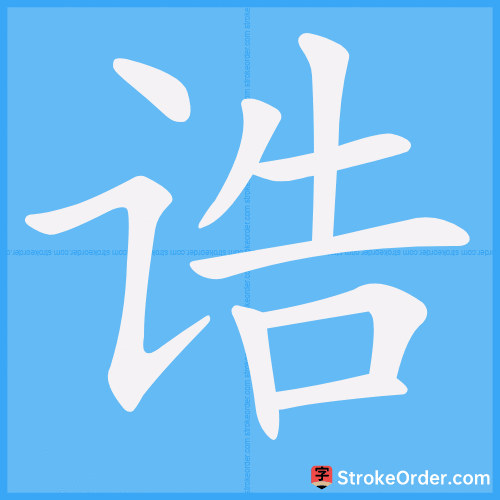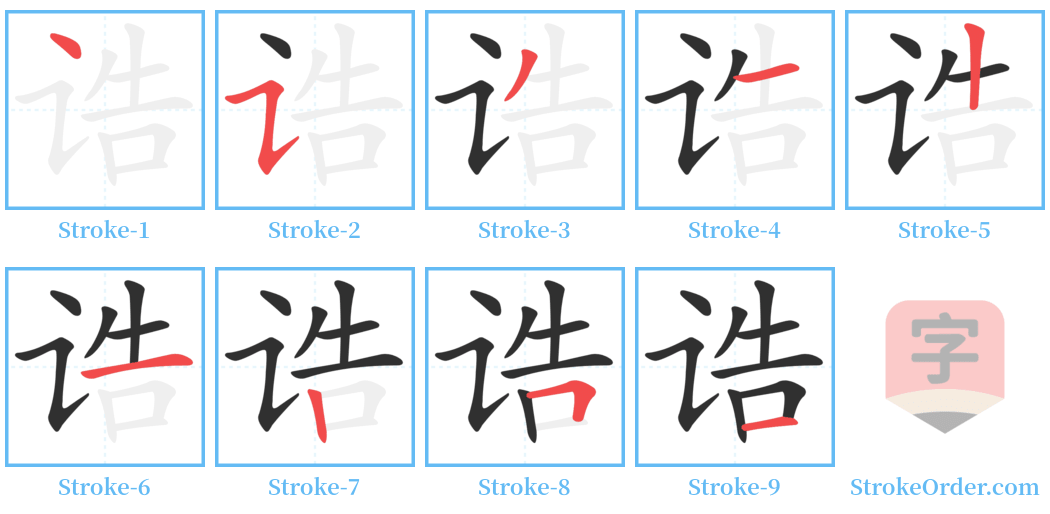诰 Stroke Order
Animated Stroke Order of 诰

Stroke Order Diagrams for 诰

Step-by-Step Handwriting Guide for 诰

Learn to Write Chinese Characters with Video Tutorials
Watch the video of writing the Chinese character "诰", learn the correct stroke order (笔顺) of the character "诰", and master the standard way of writing the character "诰".
Free Printable Handwriting Practice with Stroke Order: 诰
Printable Writing Practice Worksheet of "诰" in Portrait Orientation (Tian Zi Ge)

Printable Writing Practice Worksheet of "诰" in Landscape Orientation (Tian Zi Ge)

Information of 诰
Pinyin
gào
Radical
讠
Strokes
9 strokes
Usage
★★★★
Definition
enjoin / grant (a title)
诰 (gào)
1. Ancient emperors' commands to officials: 诰命, 诰封.
- Meaning: Commands or edicts issued by ancient emperors to their subjects, often in the form of official documents.
2. Admonition; encouragement: 自诰, 诰诫.
- Meaning: To give advice or encourage someone, often in a formal or written manner.
3. Official document for appointments or grants by the emperor: 诰敕 (documents for officials receiving titles).
- Meaning: Official writings issued for the purpose of appointing or granting titles to individuals by the emperor. In ancient times, both lower and upper ranks received such documents.
誥 gào
- Function: Verb
- Original meaning: To inform or tell.
- Character formation: A phono-semantic compound with elements signifying speech and the act of informing.
1. To inform or to tell; for instance, "to announce or decree."
- Example: In ancient contexts, 诰 was used interchangeably with the word "告" which means to announce or inform.
2. To admonish; to encourage or advise.
- Example: For instance, "To give admonitions or teachings."
誥 gào
- Function: Noun
1. A written admonition; an imperial mandate.
- Meaning: Text written to admonish or as a formal decree by an emperor; historically significant in the function of conveying orders and appointments.
2. Historical context: In ancient times, 诰 represents communications between different hierarchical levels of authority. The Qin dynasty replaced ancient practices with its own verbiage, while during the Tang dynasty and further, the term evolved.
Example usages:
- 诰命夫人 (referring specifically to a lady who has received a title);
- 诰授 (to grant through decree).
- 诰文 (texts related to prayers or official requests).
Input Method for 诰
Pinyin
gao4
Wubi
ytfk
Cangjie
ivhgr
Zhengma
smj
Four Corner
34761
Unicode
U+8bf0
Same Pronunciation Characters